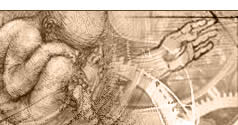 |
 |
 |
 |
 |
 |
 |
 |
|
 |
 |
 |
12 Rudimentary organs
|
| Menu | back |
In the last 150 years, in numerous creatures, organs have been discovered which were initially categorised as rudimentary, incomplete and useless. However, most often it was subsequently demonstrated that they were of great real benefit to the overall organism. In other cases it was down to atrophy. The billions of "organs under construction, with which nature should be awash, do not exist.
With evolutionary development through small mutational steps, one would expect that many creatures would be carrying with them, down the generations, organs that were half finished and in the developmental stage. Despite intensive search, no such thing has been found (1) (2) (3).
With closer study, most of the organs previously considered rudimentary have proven to be useful and beneficial (4) (5).
Several examples:
|
|
|
The human appendix assists the gut flora. In case of diarrhoea, part of the gut flora can survive in the appendix, which thereby helps to reconstitute the entire gut flora as quickly as possible. People who have had their appendix removed need longer to fully recover.
|
|
|
The pelvic girdle remnants in whales have a relationship to the genital organs and serve as a point of attachment for the strong anal muscles.
|
|
|
Embryonic tooth germs in baleen whales, which will never become real teeth, play an important role, as in all mammals, in the formation of the jawbones.
|
|
|
The loss of eyesight in blind fish: a superfluous organ is broken down.
| |
These 13 | Menu |
back
|
References:
|
| (1) |
Helmut Schneider, Natura, Biologie für Gymnasien, Band 2, Lehrerband, Part B, 7. bis 10. Schuljahr, Ernst Klett Verlag, 2006, page 268. |
| (2) |
Prof. Ulrich Weber (Süßen), Biologie Oberstufe, Gesamtband, Cornelsen Verlag, Berlin 2001, page 259. |
| (3) |
Horst Bayrhuber, Ulrich Kull, Linder Biologie, Lehrbuch für die Oberstufe, 21., neu bearbeitete Auflage, Schroedel Verlag GmbH, Hannover (1998), page 404. |
| (4) |
Junker, Ähnlichkeiten Rudimente Atavismen, 2002, Hänssler-Verlag. |
| (5) |
Junker und Scherer, Evolution, ein kritisches Lehrbuch, Weyel, 2006, pages 186190. | |
Comment this Site!
|
 |
 |
 |
 |
|

